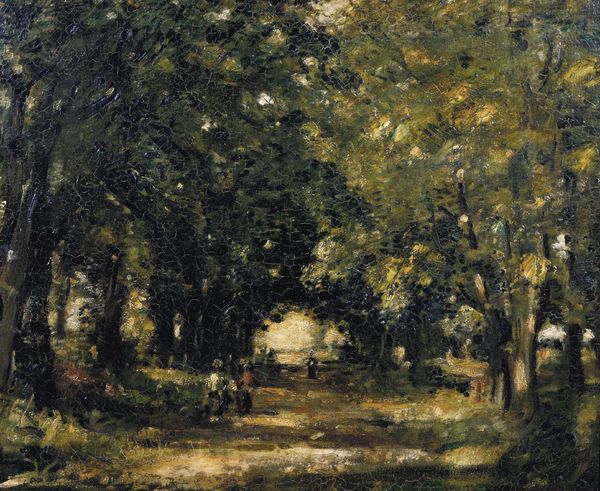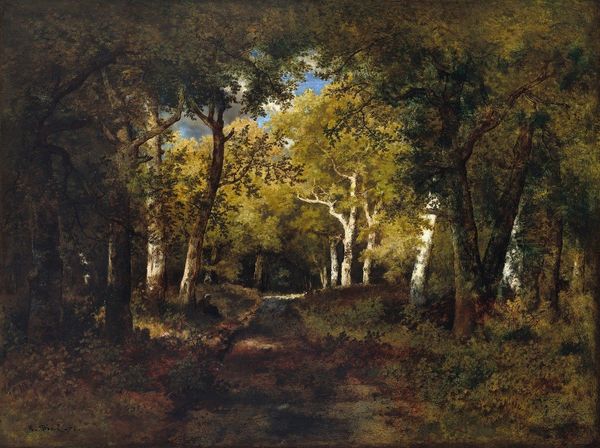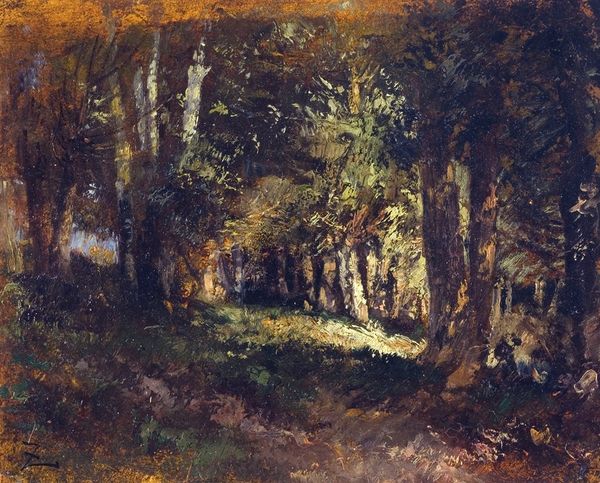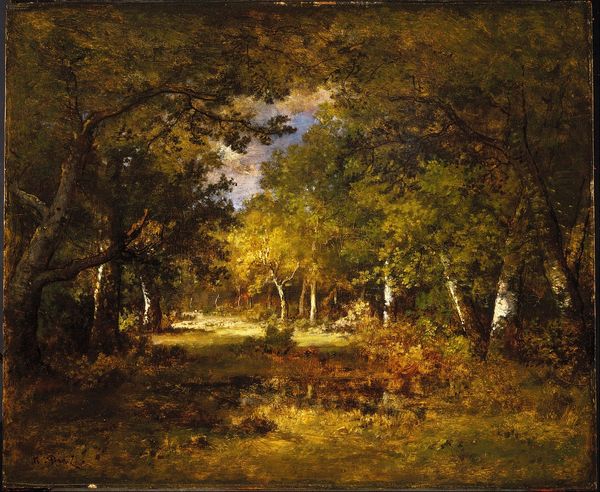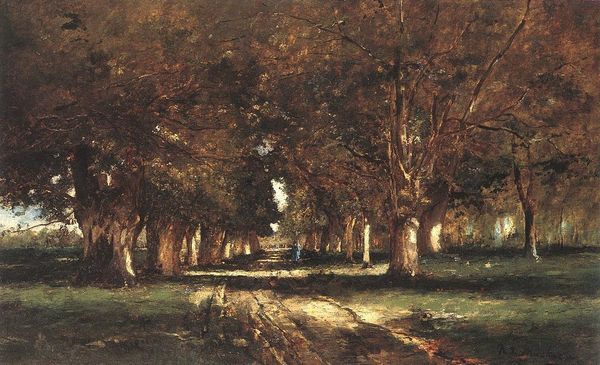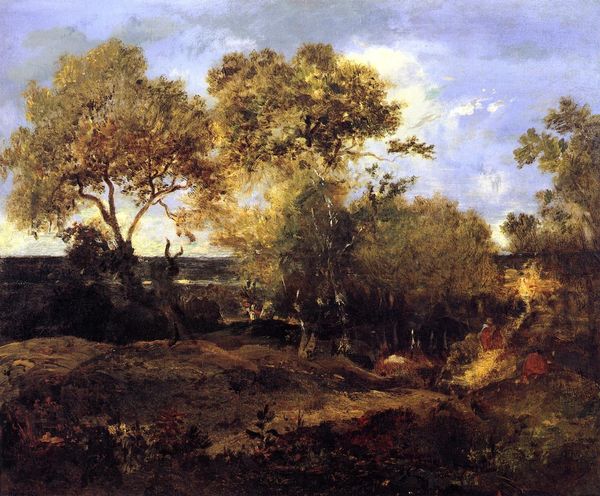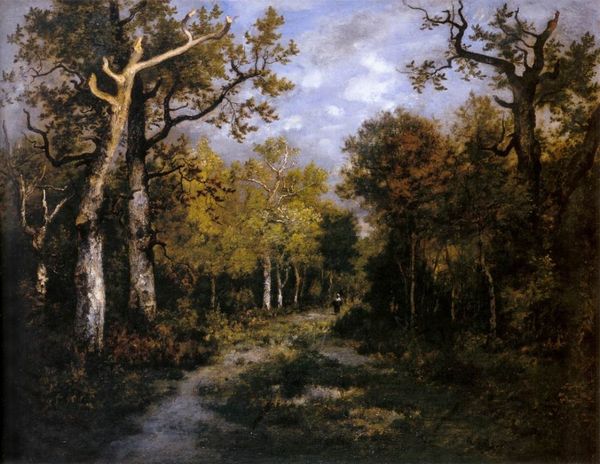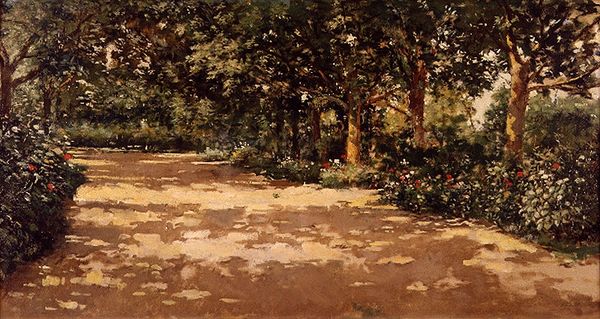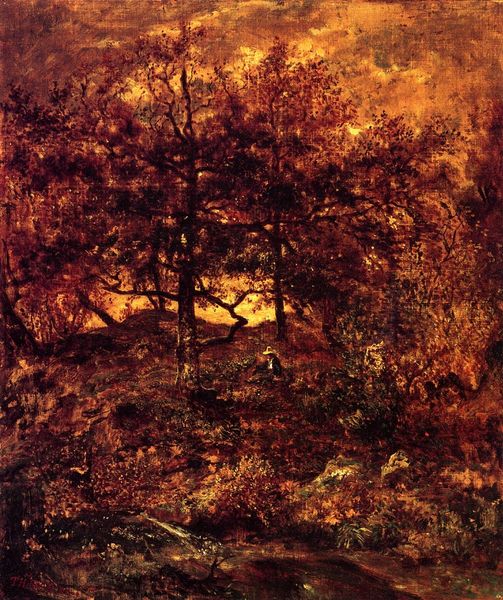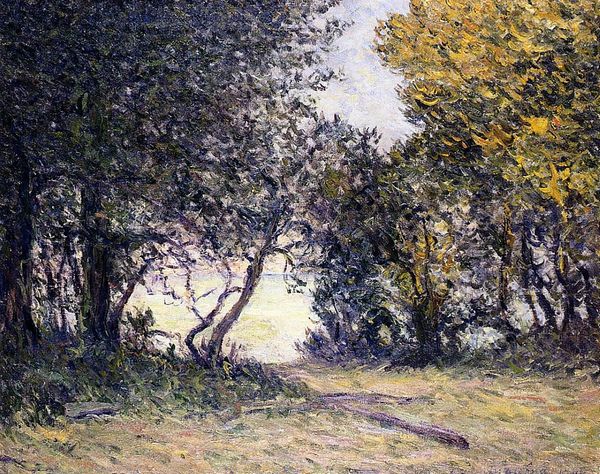
Copyright: Public domain
Editor: This is Theodore Rousseau's "Inside the Forest," an oil painting from 1857. It feels almost claustrophobic, the dense brushstrokes creating such a thick, tangled view of the woods. What strikes you about this piece? Curator: What immediately catches my eye is the way Rousseau manipulates the oil paint itself to represent the forest's material reality. Look at the density of the application – thick impasto in the foreground suggests the undergrowth is almost a barrier. Can you see how the materiality mimics the lived experience of the forest? Editor: Absolutely, the layering creates a real sense of depth and texture. I guess I was just seeing it as trees, but it’s really about *how* he's showing them. How does that technique connect to its context, say, with other paintings being done at that time? Curator: Think about the shift happening in mid-19th century France. Urbanization was increasing. Rousseau and others in the Barbizon School weren't just passively depicting nature. Their detailed and painstaking rendering with paint emphasized labor and the process, standing in contrast to the increasingly industrialized world outside of the canvas, like an anti-commodity. Editor: So, the labor that goes into making this kind of detailed landscape painting, using oil paint, pushes back against mass-produced objects and a loss of connection with the natural world. Is that accurate? Curator: Precisely. And note that the choice of subject and method challenges a clear-cut distinction between fine art and craft. Consider the hours of labor and artisanal skill. Rousseau isn't just representing; he's building something tangible that connects us to the material realities of both nature and artistic production. Editor: I hadn't thought of it in terms of labor, both the forest's processes and Rousseau's! Now the way he applies the paint really underscores his connection to the land and his craft. Curator: Exactly. By exploring the process, materiality, and historical context of the piece, it opens new understandings of its significance.
Comments
No comments
Be the first to comment and join the conversation on the ultimate creative platform.
